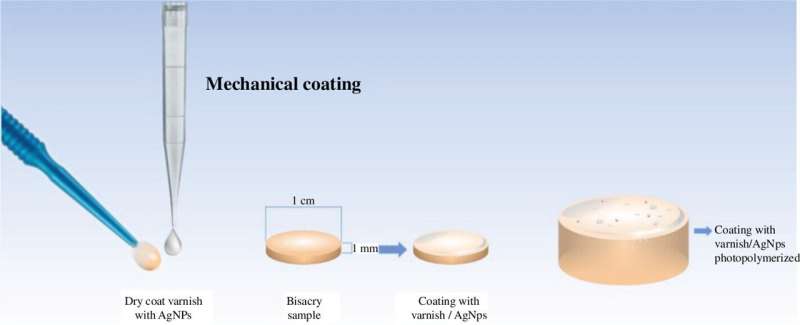Researchers have developed a novel self-hygienic resin infused with silver nanoparticles to prevent microbial colonization in dental applications. This innovative material could help maintain the delicate oral ecosystem, reduce infections, and improve patient outcomes. Learn more about the science behind this breakthrough and its potential impact on the future of dentistry. Silver Nanoparticles, Dental Restoration

Conquering Oral Biofilms
There is a huge amount of good and bad microorganisms in the human mouth. When it comes to dental restoration, this means that the materials had to be robust enough to withstand all of this dynamic action.
Unfortunately, a lot of the dental materials we have used for traditional restorations are pretty good at doing that – they promote the formation of biofilms (communities of bacteria that adhere to surfaces and release slime-like substances as protection). Biofilms may cause the material to corrode, discolor, and even result in harmful infections such as gingivitis or prosthetic stomatitis. If this challenge can be addressed, the power to fine-tune the oral microbiome would facilitate more durable and healthier dental treatments.
Silver Nanoparticles- The Ultimate Solution
And that’s the power of silver nanoparticles (AgNPs). These nanoscale materials, which are on the order of billionths of meters, exhibit unique antimicrobial as well as optical and electronic both of which have made them a subject of study in various fields. A team of researchers from the Interdisciplinary Research Laboratory (LII) at ENES Leon, UNAM was inspired by the properties of AgNPs to create a novel self-hygienic dental resin.
The researchers have developed a new material by adding AgNPs to the surface of composite resins used for temporary dental restorations that actively suppress the growth of early-colonizing bacteria in the mouth. “Consequently, our method allows the silver to remain on the surface of the resin for a longer period, exerting its antibacterial effects through a sustainable release of its ions,” states Verónica Campos-Ibarra, a postdoctoral researcher at ENES Leon and Professor from the School of Stomatology. Its continuous antimicrobial effect enables him to fight against biofilm formation, which dramatically extends and secures the vitality of dental restoration.
Maintaining A Well Balanced Oral Environment
This advance could have implications far beyond the material, itself. The researchers are working to overcome this obstacle by creating nanostructure-modified medical devices that, one day, could help dental treatments restore both function and beneficial microbes.
According to Ravichandran Manisekaran, research professor and head of the Nanostructures and Biomaterials lab, “These materials allow savings in treatment costs and reduce infections leading to increased investment in the quality of patient life. This self-hygienic resin, which would dramatically reduce the risk of post-procedure complications, and dangerous infections, could potentially change how we manage oral care to make it safer more affordable and patient-focused.
The capacity for revolutionary healthcare breakthroughs in dentistry and other fields through the application of nanomaterials remains both vast and tantalizing as science continues to investigate their distinct characteristics. This groundbreaking research demonstrates the strength of uniting different fields and the value of seeking answers that help people.
